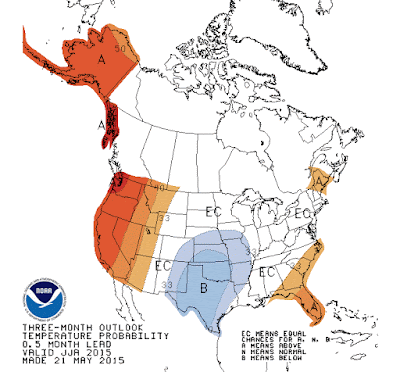Biology: Orchardgrass (
Dactylis glomerata), is a clump-forming, or bunch-type, cool-season grassy weed found throughout the Midwestern United States. It is typically used as a type of grazing or forage grass in pastures but it can be a weed in turf. It’s bunch-type growth pattern, light blue-greenish color, ability to tolerate partial shade, and rapid leaf elongation make orchardgrass a problematic weed (plant out of place) in many lawns.
Identification: Orchardgrass is a bunch-type cool season perennial grass that is commonly found in home lawns throughout the state of Indiana.
Orchardgrass often infests lawns as a contaminant in grass seed or in
newly established lawns that previously consisted of pasture-land. Orchardgrass can often be found thriving in partially shady conditions that might stress the health of the surrounding, desirable turf. It is easily spotted in lawns when it grows much more quickly and is lighter-green the surrounding turf. Additionally, its bunch-type growth habit doesn’t make a particularly dense canopy when it infests lawns, thus only enhancing its status as a grassy weed.
Its leaves are folded in the bud and have a finely toothed, prominent membranous ligule. As it grows, the leaf blades become very long, are light-green/blue-green in color, and are still slightly rough to the touch on the surface and the outer leaf margins. The membranous ligules grow slightly longer and become more noticeable as the plant matures. The leaf sheaths are strongly compressed and folded. Because orchardgrass has a bunch-type growth habit, the clumps increase in size by developing aggressive tillers which emerge from the base crown of the plant. Orchardgrass also has a very rapid vertical growing rate compared to other desirable cool-season turf which requires more frequent mowing in order to keep a uniform lawn surface. Additionally, the leaf tips have a tendency to tear or shred, even when the mower blades are sharp.
In the late spring through mid-summer, the plant produces seedheads in a stiff, branched panicle with fan-shaped, densely crowded spikelets of viable seed. The spikelets are often so crowded that when observed from afar, the seedhead almost looks globular or spherical in appearance.
 |
| The prominent membranous ligule of orchardgrass. |
 |
| A side view showing the compressed sheath/stem and folded vernation. |
 |
| Orchardgrass has a boat-shaped leaf tip. |
 |
| Clump of orchadgrass in a shady lawn. |
 |
| Clump of orchadgrass in a newly seeded Kentucky bluegrass lawn. |
 |
| Orchardgrass in a newly planted Kentucky bluegrass sod field. |
 |
| The faster growth habit of orchardgrass is evident here. |
 |
| Here a mature clump of orchardgrass is growing much quicker than the surrounding turf species. |
 |
| Orchardgrass seedhead developing in a lawn between mowings. |
Cultural control: None known specifically for orchardgrass. Mowing practices alone will not provide adequate management since orchardgrass can survive in many of the same environmental conditions and management programs as other desired turfgrass species.
The best method of cultural control for orchardgrass is to avoid contaminating your turf system in the first place by buying certified seed mixtures/blends from a reputable seed company. Carefully read the labels of seed you are purchasing to make sure that orchardgrass is not mentioned as a weed seed. Existing clumps of orchardgrass can also be physically removed by hand, pocket knife or shovel/hoe.
Biological control: None known specifically for control of orchardgrass in cool-season lawns.
Chemical control: Unfortunately, only nonselective control options exist for orchardgrass in cool-season turf. Spot-treating with a nonselective systemic herbicide such as glyphosate (Roundup) will help to manage orchardgrass in cool-season lawns. For best results, apply when the plants are young and actively growing. Often multiple applications may be necessary to completely eradicate the weed; however, it is important to allow the grass to regrow before making any follow-up applications.
Aaron Patton, Turfgrass Extension Specialist, Purdue University
Leslie Beck, Weed Extension Specialist, New Mexico State University





































